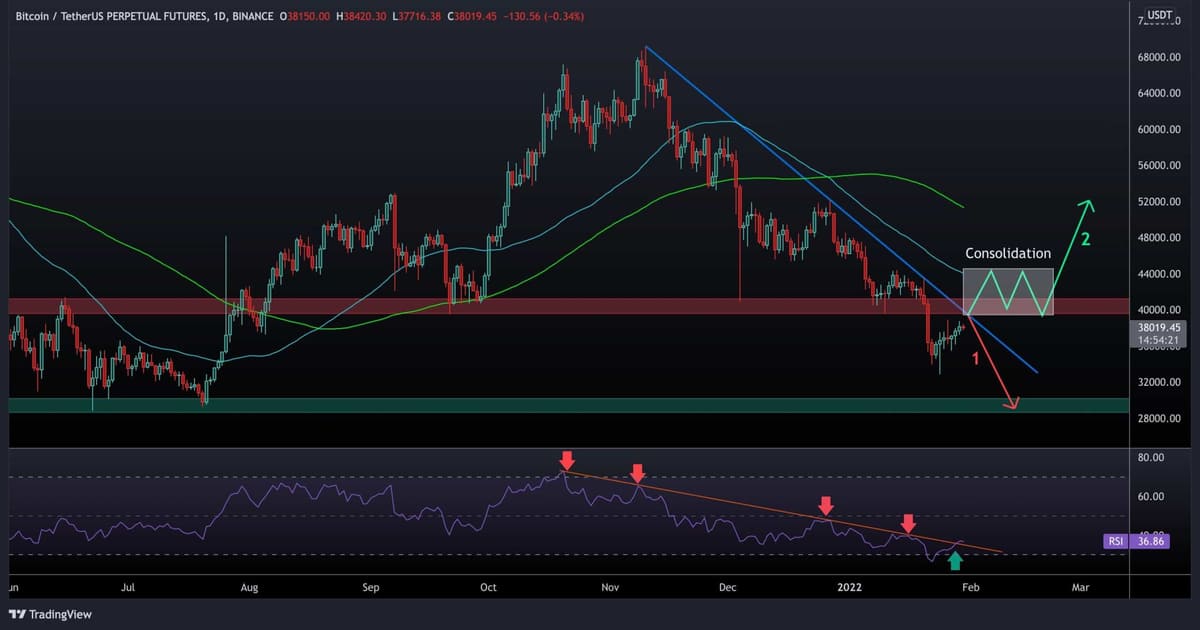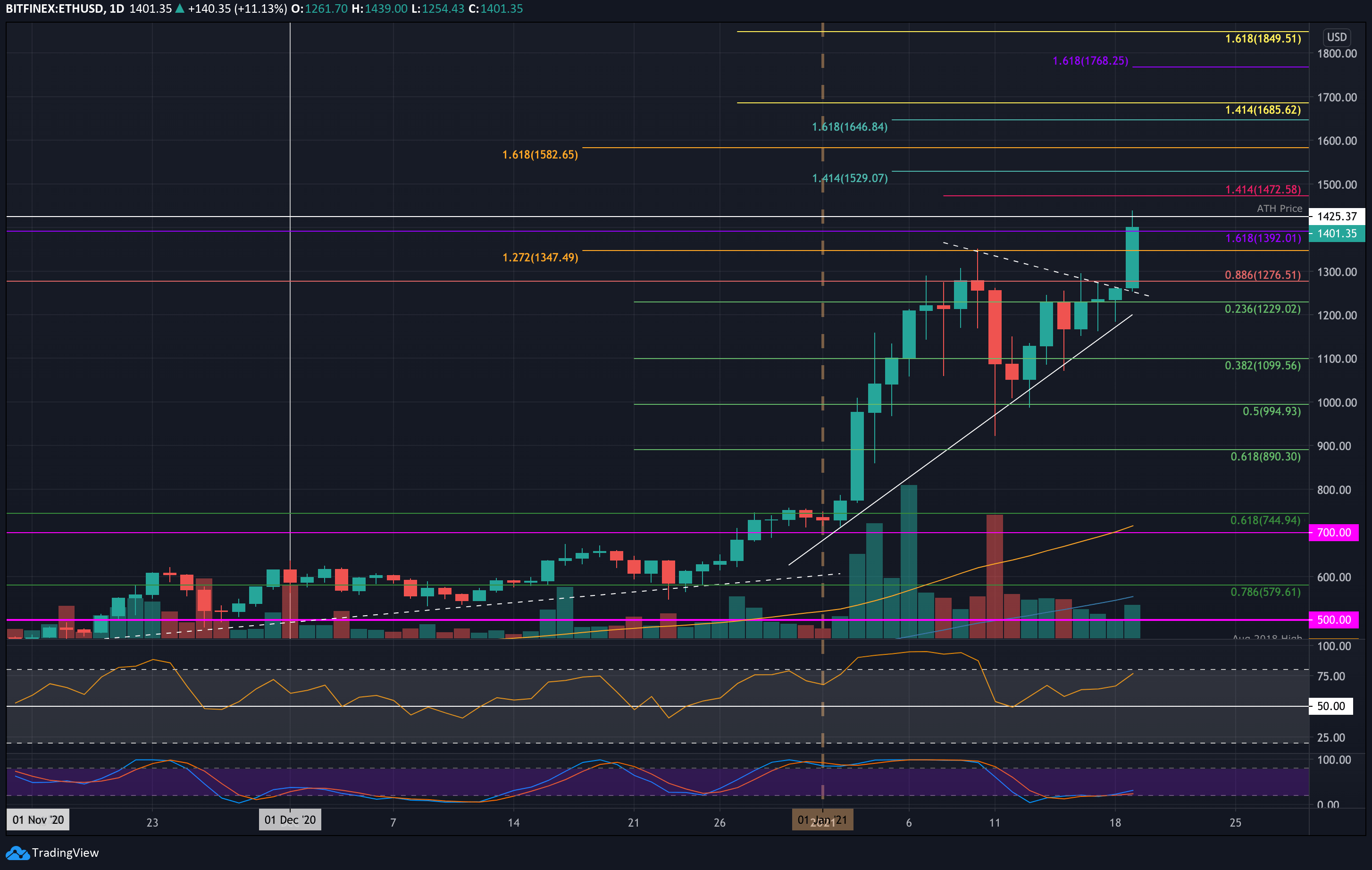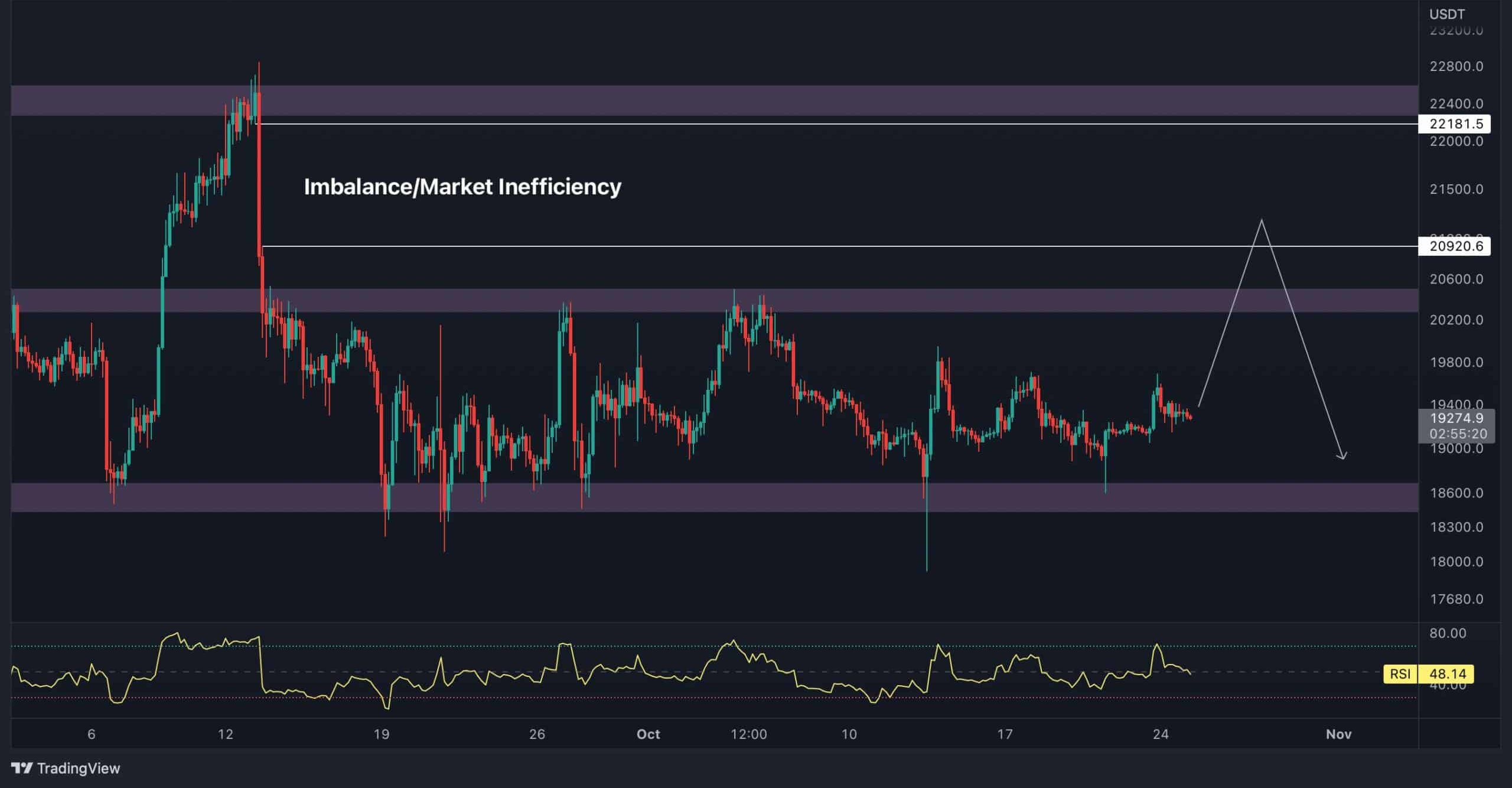
After a challenging week, Bitcoin’s price is slowly recovering after a 50% drop from its all-time high in November 2021. The following analysis will explore two potential scenarios based on technical factors. Looking at the daily chart, Bitcoin’s price has been recovering after its dramatic plunge of over 50%, falling below $33K last Monday. However, Bitcoin is still below two significant resistance levels. The first is the blue bearish trendline, which has pushed the price lower each time BTC attempted to break above it. The second key area is the range between $39K and $41K. On the positive side, the daily RSI has broken out of its multi-month low-sloping resistance. Historically, the two previous breakouts of this kind led to significant bullish moves over the past year.
In conclusion, two possible scenarios are:
- Break above the descending trendline and the red area (around the $40K zone), consolidate above the zone for a period, pull back to the resistance level, and then initiate a rally into the $50K-$60K range.
- Rejection at both the trendline and the horizontal resistance area, forming a new lower high that confirms the bearish trend, followed by a drop to lower price levels and a test of support zones to form a new local bottom.
Bitcoin has multiple resistance levels on the lower timeframes (LTF). The price has created lower highs and lower lows within a solid bearish descending channel. Currently, the price is trading below the 100-period MA line and the upper trendline of the channel. For the market to reverse and start a new bullish rally, Bitcoin must break out of this trendline and establish a new higher high. Alternatively, the price might touch the trendline, form a new lower high, and then face rejection, retesting lower price levels. Recently, there has been a sharp increase in the volume of stablecoins deposited into exchanges. This surge mirrors the same pattern we saw in May 2021, after the crash to the $30K range. This suggests that liquidity is ready to buy the dip. However, it’s worth noting that accumulation phases following significant market crashes typically take some time. Therefore, it may take a few weeks or even months before a price rally emerges, similar to the situation last year.



